Divinity Hall to be rededicated
Amidst the anxieties, toils, pleasures, dissipations, and competitions of life, in the stir and bustle of society, and in an age when luxury wars with spirituality … we would devote these walls to the training of warm . . . generous spirits.
— William Ellery Channing, in his address “The Christian Ministry,” delivered at the dedication of Divinity Hall on Aug. 29, 1826
In an age uncannily consonant with these words spoken by William Ellery Channing 174 years ago, Divinity Hall will be rededicated with a celebration that starts at 1:30 p.m. tomorrow (Sept. 22). The building, site of Ralph Waldo Emerson’s famous “Divinity School Address” and residence over the years of such budding intellectual luminaries as Emerson, Theodore Parker, and George Santayana, was reopened last February after an extensive renovation. The new dedication will take place in the quadrangle outside the building’s new front doors, and the speakers this time around are the Rev. Peter Gomes, Plummer Professor of Christian Morals and Pusey Minister in the Memorial Church; Elaine Pagels, Paine Professor of Religion at Princeton University; and the Rev. John Buehrens, president of the Unitarian Universalist Association.
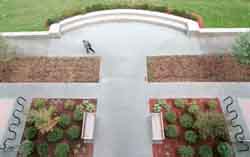
Divinity Hall was the first Harvard University building constructed outside the Yard. According to George Huntston Williams’ 1954 history of the Divinity School, the thinking was that theological students needed to be separated and isolated, lest they imbibe “more of the spirit of the University than of the spirit of their profession.” Although the original intention may have been to separate and contain theology students and theological studies from Harvard proper, the construction of Divinity Hall had the opposite effect. The rustic brick edifice, designed by Solomon Willard and Thomas Sumner, was a significant marker in the life of the fledgling Divinity School, but also became the focal point of some of Harvard’s most important site planning.
The renovated version of Divinity Hall, designed by Gail Woodhouse of the Boston firm Amsler Woodhouse MacLean, again makes the building a linchpin for the Divinity School’s practical and programmatic future. “We were essentially landlocked, but the Divinity Hall project has created flexibility and wiggle-room that are key to doing a whole series of projects at the Divinity School, including the current library renovation,” said Timothy Cross, associate dean for finance and administration.
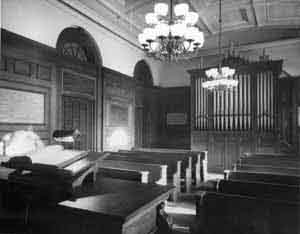
J. Bryan Hehir, head of the Divinity School as Chair of its Executive Committee, said, “After becoming a progressively less functional dormitory, Divinity Hall is now repositioned as a central, vital facility and will allow for the growth in staff and academic programs which are part of the Divinity School today.”
Divinity Hall has served many purposes. At first, it essentially contained the entire school, including residential, academic, administrative, worship, and dining facilities. When the Lücke Library, the theological collection of a noted professor at Göttingen, was given to the School in 1855, its 4,000 volumes were placed in a special room in Divinity Hall. But the Corporation and the Divinity Faculty were constantly in fear that the library would be burned up, given “Divinity Hall’s furnaces and 30 or 40 open fires and stoves.” This fear spurred the 1887 construction of a fireproof library north of the Hall.
Without a doubt, the Divinity Hall Chapel, on what is now the third floor, was the center of the School’s life, the site of worship, sermons, and historic addresses such as Emerson’s 1838 Divinity School Address, but also of weekly exercises in declamation and extempore speaking.
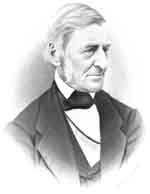
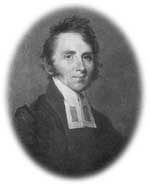
‘The true preacher can be known by this, that he deals out to the people his life life passed through the fire of thought.’
‘To what end do we devote this building? … I say … that this edifice is dedicated to the training of ministers, whose word, like their Master’s, shall be “with power.”‘
William Ellery Channing Various refurbishings are mentioned in the official Dean’s Reports of the late-19th and early-20th centuries. In 1892-93, “steam heat was introduced into the hallways and excellent bathrooms have been added on the two lower floors.” In 1898-99, a “modern” bathroom “with four slate-lined shower baths,” tennis courts at the rear, and “common rooms” were added. In 1904, the Chapel was completely redone by the architect A.W. Longfellow Jr., a nephew of Henry Wadsworth Longfellow. These changes apparently transformed Divinity Hall from being, in the words of one Dean, “in disfavor among many students” to being “one of the most popular dormitories, occupied by a select and congenial colony.” In 1916, steam heat made its way into students’ rooms and electric lights were installed.
When Andover Hall was constructed in 1910 and most of the School’s administrative offices were moved there, Divinity Hall became primarily a dormitory.
Krister Stendahl, Mellon Professor of Divinity Emeritus and Dean of the Divinity School in the 1970s, lived in Divinity Hall in the 1940s, and he recalls that the School had fallen on such bad times then that the dorm could not be filled by Divinity students. Rooms were used by students from other schools. But, said Stendahl, “when new faculty including Paul Tillich started in 1955 and the number of new students increased, Divinity Hall again became a dorm for the Divinity School.”
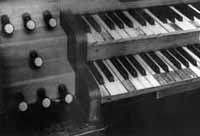
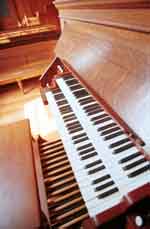
Today, there are state-of-the art classrooms, with greater technological capacities, and faculty and administrative offices on all four floors; all are connected by a new central staircase that has for the first time filled the building with natural light. The uncovered first floor, once a basement used for coal storage and mechanical equipment, and later the kitchen and laundry room, now is home to the Divinity School Bookstore and the first schoolwide student lounge that HDS has ever had. The Chapel has been carefully preserved, and its organ has been rebuilt and reinstalled. Because the building is no longer a dormitory, the Chapel will now be accessible to the public to visit and even to rent for weddings or other services. And the School’s ministerial staff will use the Chapel for preaching classes and some services.
As is often the case, this renovation ended up being more complicated and expensive than the architects, administrators, and site planners anticipated, but it also has been more successful than they expected. “This building is listed on the national register, so the renovation had to conform to extensive rules for historic buildings,” explained Gail Woodhouse. “We were able to make the building accessible to everyone, increase the amount of usable square footage, and connect it to the rest of the Divinity School while respecting the historic nature of the building.”
As with any major change in a School’s life, this one does not come without some grieving. Both Stendahl and Peter Gomes (another mid-20th century resident of Divinity Hall) expressed sadness that the building has ceased to be a round-the-clock residence.
But there may be some overnight residents still lurking around, after all. Part of the lore of the building includes ghost stories. Gomes reports hearing from his proctors that the building was haunted, and he passed this impression along when he became a proctor. “It was said that if you heard strange noises by the chapel, or saw someone there you didn’t recognize, it was probably a ghost,” Gomes said. These ghosts were believed to be “benign, doubtless Unitarian, rational ghosts,” he added.
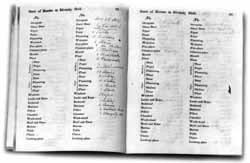
The ghost stories are much like the memorabilia that were unearthed in this renovation — a 1923 Sunday school instruction book, a top hat, and an assortment of artful 19th-century medicine bottles, for example — reminders that even as Divinity Hall faces the future, it will never leave its rich history behind.
If you would like to attend the Divinity Hall Celebration, please call (617) 496-5484.




